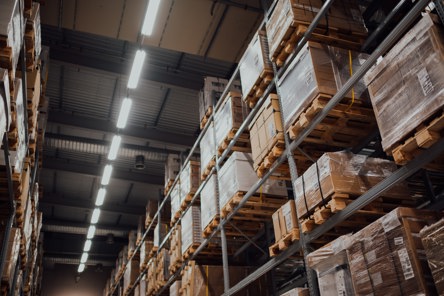Ecommerce fulfillment is the behind-the-scenes process of receiving, processing, and shipping customer orders made on online stores and marketplaces. As ecommerce sales continue to accelerate globally, order fulfillment has become a key capability for retail brands to deliver a premium post-purchase experience. This detailed guide will examine each step of the ecommerce fulfillment workflow along with tips for managing common challenges.
ORDER CAPTURE AND MANAGEMENT
The ecommerce fulfillment sequence starts when a customer finalizes an order on the seller's website, online store, or marketplace listing. The order information including items purchased, quantities, buyer details, payment method, and shipping address is captured instantly. Integrated ecommerce platforms automatically send this data to the seller in real-time through order notifications.
Sellers review each order to verify accuracy and completeness of information. Valid orders are accepted while any with data discrepancies or suspected fraud are rejected or held for further investigation. Once orders are verified, they are ready to progress to fulfillment processing.
To manage high daily order volumes, ecommerce sellers use order management systems (OMS) that act as centralized dashboards. OMS tools typically integrate with shopping carts, marketplaces, shipping carriers, and inventory systems. This enables the status of each order to be tracked and updated in real-time across all stages of fulfillment. Robust order management is essential for efficient workflows, reducing errors, and providing visibility into customer shipments.
INVENTORY ALLOCATION
The next step in the workflow is inventory allocation where available quantities of the ordered products are assigned to each order. This prevents overselling of existing stock. Ecommerce sellers integrate their OMS with an inventory management system (IMS) which tracks product quantities across warehouses in real-time.
Popular IMS tools use perpetual inventory recording based on goods receipts from suppliers and order shipments to customers. By linking IMS and OMS, available and reserved stock quantities are synchronized. Backordered items are also marked to fulfill when restocked. Integration minimizes costly out-of-stock errors.
WAREHOUSE PICKING AND PROCESSING
Once inventory is allocated, warehouse staff proceed with order picking - selecting purchased items from storage to be packed and shipped. The OMS generates batch pick lists optimized for warehouse layout and inventory locations. Larger orders may be split into multiple carts or batches for efficient picking.
Equipped with pick lists on mobile devices or handheld scanners, staff navigate warehouse racks and shelves to identify products. Barcode scanning confirms each item and quantity as it's picked. Some warehouses use automated systems where staff pick to assigned zones while robots fetch and convey products to the packing station.
After completing the picks, items are conveyed to packing stations. Here staff scan products to verify accuracy, insert items into shipping containers, add packaging materials like bubble wrap for protection, and generate a packing slip to include. Orders are finally weighed and measured to determine optimal shipping box sizes and calculate rates.
SHIPPING INTEGRATION AND LABELING
Once packed, orders move to the shipping area. The OMS connects with shipping APIs like ShipStation or direct carrier integrations to purchase and print shipping labels. Based on delivery address, box dimensions, and weight, it automatically selects the fastest cost-effective carrier and service. Discounted carrier rates provided based on monthly volume can lead to significant savings.
Some fulfillment facilities print labels and store orders for periodic carrier pick-ups. Others have onsite carrier hubs for instant handoff. Either way, the OMS marks orders as 'shipped' once the tracking number is assigned by the carrier which triggers delivery status monitoring. Notifications are automatically sent to buyers with shipment details and tracking links.
STREAMLINED SHIPPING
To limit touchpoints and accelerate delivery, leading ecommerce brands use distributed order management systems (DOM). These regionalize fulfillment by mapping orders to the closest warehouse with available inventory. This reduces zone skipping where packages travel long distances back and forth. DOM also enables dynamic routing around weather disruptions, traffic delays, and carrier bottlenecks.
Post-purchase, customers anxiously await order delivery which impacts brand satisfaction. To streamline shipping, strategies include:
- Same-day processing and handoff
- Carrier pickups every 2-3 hours
- Local final-mile couriers for expedited delivery
- Proactively messaging customers of delays
- Providing premium shipping tiers
- Partnering with a 3PL with a national warehouse network
These fulfillment capabilities provide flexibility and transparency while exceeding delivery expectations.
RETURNS MANAGEMENT
A significant portion of orders get returned (i.e., apparel return rates are particularly high), so efficient returns handling is imperative. When a buyer initiates a return request, the seller provides a prepaid return shipping label. Once the item is received at the warehouse, staff inspect it, verify cause for return, and decide whether to refund/replace or restock.
For refunds, payment is sent back to the customer immediately upon re-receipt of goods. To exchange, replacement items are shipped as soon as viable. Restocked returns are moved back to saleable inventory after any repackaging or repair needed.
To streamline returns, leading practices include:
- Accepting returns within 30-90 days of delivery
- Providing free, prepaid return labels
- Fast refund processing and exchanges
- Scheduling regular carrier pickups for returns
- Identifying return trends to reduce reasons
- Automating return status tracking
The rise of ecommerce has led to over $550 billion in merchandise returns every year. While costly to manage, easy returns policies boost conversions and customer loyalty long-term.
LEVERAGING 3PLS FOR OUTSOURCED FULFILLMENT
Given the operational complexities, many high-volume sellers partner with third-party logistics (3PL) providers to outsource fulfillment. 3PLs have large, specialized warehouse networks across regions, an existing workforce, and deeply discounted shipping contracts. Top ecommerce 3PLs will also integrate seamlessly with all major storefronts.
Key benefits of 3PL relationships include:
- Reduced Fulfillment Costs - 3PLs drive significant synergies across clients to lower fulfillment costs
- Improved Order Accuracy - 3PLs laser-focused on fulfillment have excellent quality control and low error rates
- Quicker Order Processing - 3PLs have the bandwidth to turn around orders within 24 hours on average
- Enhanced Scalability - Ecommerce brands can scale to meet sales spikes like Black Friday and the holidays
- Omnichannel Support - 3PLs can fulfill orders from brick-and-mortar, online, and wholesale channels
- Real-Time Reporting - 24/7 access to inventory quantities, order status, and tracking through 3PL portals
- Deep Shipping Discounts - High volumes let 3PLs secure the lowest rates which they pass on to clients
3PL partnerships enable ecommerce sellers to completely outsource fulfillment. This way they can focus efforts on optimizing the customer purchase journey and driving online sales growth.
OMNICHANNEL FULFILLMENT
Leading ecommerce retailers combine online sales with physical store networks, marketplaces, and wholesale channels. This omnichannel approach requires unified order orchestration. Orders placed across any channel get fulfilled from the available inventory nearest to the buyer to minimize delivery time and cost.
Stores double as mini-warehouses to fulfill online orders through in-store pick and pack or ship-from-store. Buy-online, pickup-in-store (BOPIS) provides a popular omnichannel option for customers. Unified order management and inventory visibility across the network enable seamless omnichannel fulfillment.
FUTURE INNOVATIONS
Ecommerce fulfillment is being further modernized by robotics, automation, and other emerging innovations:
- Autonomous mobile robots - Handle internal warehouse transfers and transport
- Robotic pickers - Pick products accurately with grasping technology
- Automated sorting systems - Route inventory to optimal storage locations
- Predictive analytics - Recommend inventory levels, staffing needs based on trends
- Drones - Provide same day/instant delivery from local micro-fulfillment hubs
- Augmented reality - Assists warehouse pickers with finding items quickly
- Exoskeletons - Reduces fatigue for staff by enhancing lifting capacity
As fulfillment complexity rises with omnichannel operations, these technologies will drive greater speed, accuracy, and efficiency.
Fulfillment is the lifeline of ecommerce. To sustain growth and loyalty, brands must obsess over providing a premium post-purchase experience. While outsourcing to 3PL specialists or building internal capabilities, ecommerce sellers should explore emerging technologies to future-proof fulfillment as the next frontier of innovation. Delighting customers with the unboxing of their online orders has become the new battlefield for retail dominance.





